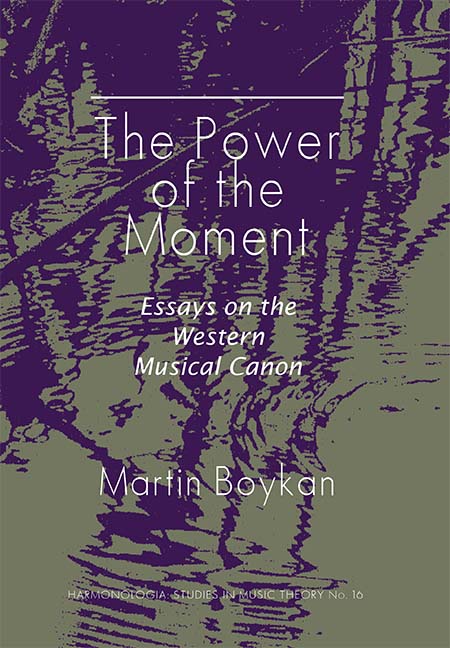Book contents
- Frontmatter
- Contents
- Acknowledgements
- Martin Boykan Biography
- I Introduction: Some Words About Theory
- II The Power of The Moment: The Hammerklavier and the Archduke
- III Voice and Piano in Dialogue: Seven Songs from the Winterreise
- IV A Recurrent Tonality: The Meaning of the Kiss in Verdi's Otello
- V Resetting the Clock: The Scherzo of Beethoven's Fifth
- VI The Power of Every Moment: Musical Continuity in J. S. Bach
- VII Coda
VI - The Power of Every Moment: Musical Continuity in J. S. Bach
- Frontmatter
- Contents
- Acknowledgements
- Martin Boykan Biography
- I Introduction: Some Words About Theory
- II The Power of The Moment: The Hammerklavier and the Archduke
- III Voice and Piano in Dialogue: Seven Songs from the Winterreise
- IV A Recurrent Tonality: The Meaning of the Kiss in Verdi's Otello
- V Resetting the Clock: The Scherzo of Beethoven's Fifth
- VI The Power of Every Moment: Musical Continuity in J. S. Bach
- VII Coda
Summary
For generations Bach chorales have been used to teach the principles of functional tonality. They seem ideally suited to the classroom, but I would always advise anyone harmonizing a chorale melody to be prepared to encounter the uncanny.
By and large, a chorale is not a very exciting object. Most of the melodies are not by Bach; like hymn tunes generally, they tend to be unassuming, and some are actually quite dull. It does not take much effort to produce a version that sounds like a true copy of the Bach style—until you look at what Bach actually wrote, and although he is more than likely to confirm your harmonic choices in general, there is almost always a small detail somewhere, a passing tone or a neighbor note in an inner part, that suddenly takes your breath away, and makes you wonder why you didn't think of it, and what makes it so beautiful. It is this unfailing ability to “load every rift with ore” that turns his music into such an overpowering experience.
For this reason I decided not to conclude these essays with a major contrapuntal work, but rather to consider a very simple piece like the slow movement of the unaccompanied violin sonata in C (Ex.6.1). There is counterpoint here too, of course, but since it is composed for a single instrument, conversations between voices are mostly implied. The form is quite simple and actually fairly routine; the first three phrases are punctuated by cadences on the tonic, the dominant and the supertonic, and the final section leads back by way of the dominant to the tonic. The entire piece is only 21 measures long, and is really nothing more than a single extended melody for the violin. But a melody that is almost unbearably rich and expressive!
Because this is such a short piece, I think that it might be useful to begin at the beginning rather than with a particularly revealing moment. Freed from the demands of a large structure, we have the opportunity to explore musical continuity on an intimate level, to trace the way meanings unfold from phrase to phrase as we experience them in the course of a performance.
- Type
- Chapter
- Information
- The Power of the MomentEssays on the Western Musical Canon, pp. 93 - 104Publisher: Boydell & BrewerPrint publication year: 2011



